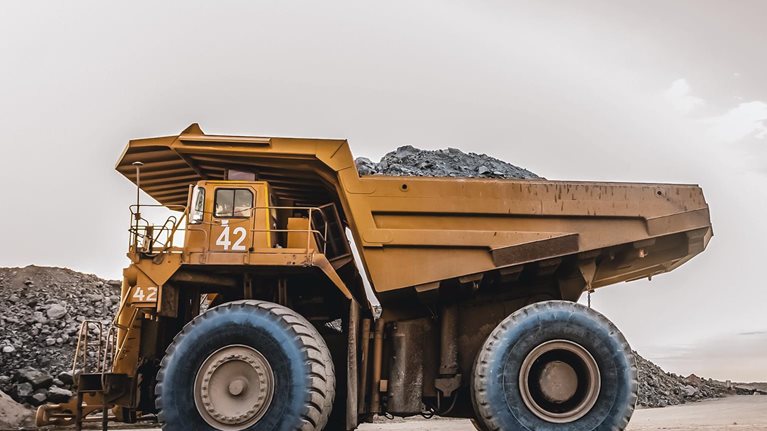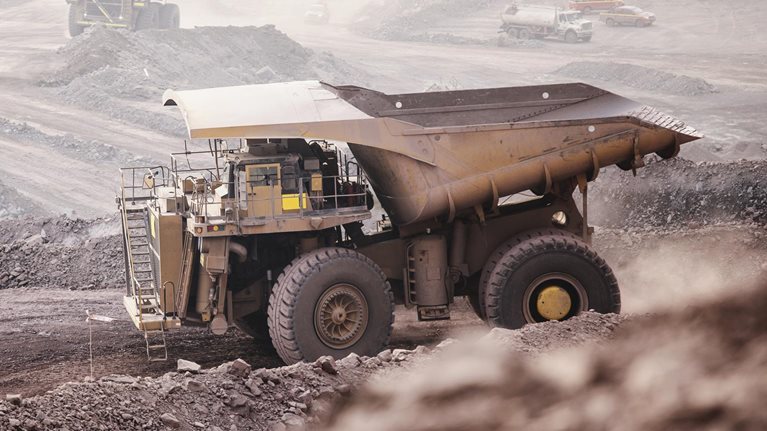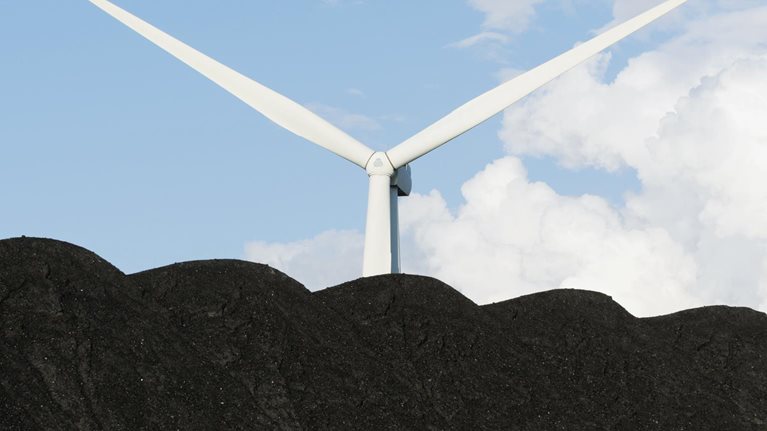Despite recent headwinds, the world’s big miners are strong and optimistic. Alongside the energy transition megatrend and other developments, the pandemic triggered sudden elevated demand coupled with supply disruptions, which raised commodity prices, resulting in significant upside for miners. The figures show that 2021 was a record year, and 2022 is expected to be another: in recent months, prices for many mined commodities have hit record levels. The industry’s EBITDA margin1 is estimated to be in the range of 40 to 50 percent for 2021, higher than 2020’s approximately 34 percent margin, which is in line with the historical average of 35 percent between 2010 and 2019. Demand for selected commodities is expected to increase with the growth of consumer spend, much of it likely to come from more than one billion Asians entering the global middle class by 2030.2
The capital markets have recognized and rewarded this stellar performance: since the start of global lockdowns in March 2020, the top 50 miners have significantly outperformed major market indexes. Their total market capitalization climbed by some 40 percent over the period from December 2019 to December 2021.
Historically, cyclical commodities pricing has made valuations volatile. Moreover, there has been significant change among the CEOs and boards of mining companies over the past ten years. Given this picture, mining executives would be well advised to think proactively about how to maximize shareholder returns in the years to come. This would include an assessment of organizational strengths and trends shaping the industry, along with consideration of five focus areas.
Conditions favoring change
The industry is enjoying strong balance sheets and P&Ls but coming off almost ten years of underinvestment. Globally, capital expenditures in mining fell from approximately $260 billion in 2012 to $130 billion in 2020 (corresponding to 15 percent and 8 percent of industry revenues, respectively). This change in circumstances is even more apparent relative to the situation in 2016: as commodity prices declined from 2012 to 2016, most mining companies focused on reducing capital expenditures, fixing balance sheets, and controlling costs. Since 2016, absolute capital expenditures have risen, but relative to cash flows from operations levels of capital expenditure are still modest. This suggests that although growth is once again on their agendas, executive teams and boards remain cautious about using large-scale capital projects to fuel growth.
Capital expenditures for the top 50 miners are expected to rise to $84 billion in fiscal year 2022, 30 percent higher than 2019’s level. Notably, however, this remains around 30 percent below peak capital spending of some $125 billion in 2013. On average, top miners have deployed around 70 percent of their cash flow from operations as capital expenditure while setting dividends at around 20 percent. Meanwhile, according to our analysis of McKinsey’s Mining Productivity Index, productivity has recently improved but is still some 25 percent below levels achieved in the mid-2000s.
Along with room to improve productivity and resources to invest, mining companies have potential to see continuing strong demand. A notable force is likely to be the transition to a net-zero economy, which will inevitably be metal intensive. As the move toward cleaner technologies progresses, the metals and mining sector will be expected to step up to the challenge of providing the vast quantities of raw materials required. Metals and mining companies will need to grow faster and more cleanly than ever before.
Significantly, the pace of the energy transition means that availability of certain raw materials will need to be scaled up over a relatively short period—in some cases, to reach ten times current volumes or more. In certain technology-transition and supply-ramp-up scenarios, we could see copper demand exceeding supply by 5 million to 8 million metric tons and nickel by 700,000 to 1 million metric tons by 2030. For those two commodities alone, we estimate that meeting demand growth could require $250 billion to $350 billion cumulative capital expenditure by 2030 to grow and replace depletion of currently existing capacity. In that context, given the inability of mining supply to respond rapidly, managing mining operations will become increasingly complex.
Challenges as the current decade unfolds
Against this backdrop, miners have to plan for the considerable challenges of this decade. These include the urgent need to address the prospect of acute labor shortages, a legacy of underinvestment and sparse project pipelines, geopolitical risks, and low productivity.
Acute labor shortages
Miners are grappling with a severe shortage of workers, sparking production cuts and shipment delays as they compete with other industries for talent while simultaneously navigating constraints imposed during the pandemic. Recently, many miners in Australia highlighted the issue of workforce absenteeism in the face of the COVID-19 Omicron variant, with disruption anticipated to continue into the second half of 2022. For example, Rio Tinto has forecast slightly weaker-than-expected 2022 iron ore shipments, partly due to tight labor market conditions.
Meanwhile, the International Council on Mining and Metals anticipates that some 20 percent of mining and metals workers are at risk of displacement as jobs and skills requirements in the industry evolve.3 At the same time, employers in the industry are competing with leaders outside the sector for new skills—for example, competing with technology players to hire employees with digital and technology skills.
Years of underinvestment
Recent years of underinvestment and somewhat sparse project pipelines mean exploring opportunities for capital expenditures—and identifying suitable projects for execution—will be crucial. Most of the increase in these expenditures will be aimed at enabling incremental growth, with growth-enabling capital expenditures set to increase 40 percent to $100 billion or more. Other trends expected to mandate increases include a shift toward remote locations, the need to access deeper deposits, and the introduction of autonomous vehicles.
However, even though the current situation indicates a need for more capital spending by the industry, companies have been slow to adjust. We are seeing a thin project pipeline for the major miners, especially in copper, nickel, and zinc.
Potential for increased geopolitical risks
As political frictions within and between regions heat up—accompanied by a rise in resource nationalism in many of the resource-rich nations—there’s a growing likelihood that this dynamic will affect a miner’s operations, supply chain, performance, or people. Such a trend would intensify the challenges created by geopolitical risks.
Low productivity
Mining productivity peaked in the 1990s, and since then, it has fallen by more than 30 percent. This is a critical issue for miners. Unfortunately, for many, digital and analytics have not delivered their full potential, and extra value remains to be captured. Moreover, further value can be generated in additional areas, such as carbon emissions, end-to-end mine planning, and operations.
Five key areas of focus for mining leaders
To improve value, boards and top management will need to think holistically. Our analysis reveals that miners can increase absolute EBITDA performance (not simply profitability) by 10 to 20 percent via holistic growth and performance improvement. A priority for CEOs and top executives will be to ensure that all departments work together to develop and execute a winning plan for the 2020s. Many of the proposed initiatives will need several departments to work together, which will be impossible if departments work in silos.
Five major areas of focus can help miners capture value over this decade.
1. Develop a growth agenda
Miners should develop a growth agenda. This involves reviewing the company’s operating philosophy to become more agile and modular in planning. Steps to take include:
- Revisit the exploration and investment plan. The world will inevitably need more commodities. Miners therefore should consider developing a holistic plan for rapid exploration of select commodities.
- Actively consider M&A and asset diversification. Miners may find attractive opportunities to acquire assets with access to commodities where there is growing demand. However, they should be cautious of prices, because M&A is rising again.
- Assess the entire portfolio for various price scenarios. Many assets will not be viable in the long term, so companies should divest as needed. Examples of miners who are actively divesting their coal mine assets include Anglo American, BHP, and Rio Tinto, which either have divested already or are currently engaged in divesting their coal assets.
- Develop mines in a more modular and dynamic fashion. A modular approach enables companies to adjust production according to market demand and prices. It also enables them to target a specific market, such as premium “clean” ore, and will help make smaller and shorter-life assets more viable. Consider developing the philosophy of reusable plant and equipment that can be moved from one ore body to another as assets come to the end of their life. One of our clients deployed stochastic mine planning to increase the net present value (NPV) of a mine by 10 percent; the miner introduced variability measures into its mine planning and developed a scenario-based mine plan that could be adjusted depending on price and market requirements.
2. Deploy technology
Miners should think holistically—keeping in mind all use cases and as long-term benefits and capabilities—and accelerate the deployment of technology to increase throughput and reduce cost to expand the reserve base. Our work with more than 100 assets across commodities and geographies has shown that an integrated, execution-focused approach can help miners capture 5 to 15 percent improvement in EBITDA. This can be achieved through improvement in KPIs for reducing average site costs, reducing fuel consumption, and boosting throughput. Digital and analytics can enable safety improvement as well. We have also seen miners increase their reserves base by reducing average site costs, lengthen the life of their mine, and increase NPV.
One miner used sensors and machine learning to implement predictive maintenance in its fleet. The model was able to predict when components would fail, enabling an increase of more than 50 percent in the lifetime of key components. In another scenario, a metal mine used Industrial Internet of Things sensors, combined with a centralized data repository and advanced machine learning, to boost chemical recovery from the extraction process by 10 to 15 percent. Meanwhile, autonomous trucks introduced by some miners are technology-powered mining advances that have made workers safer while reducing fuel usage by 10 to 15 percent—thus improving environmental performance by 13 percent while making sites and local areas less hazardous.
Importantly, our work with leading miners across the world confirms that a few key shifts are required for miners to capture their full potential:
- Move from piecemeal solutions adding incremental value to holistic thinking around the next generation of technology solutions to access reserves faster, at a lower cost, and with a lower environmental footprint. Deploy solutions at scale to improve productivity and reduce cost.
- Develop plans to embrace new technology such as remote ore collectors (ROC), blockchain, and autonomous vehicles. Many mining companies are taking the lead in deploying new technologies, such as blockchain for provenance and carbon-emissions tracking. For instance, Tracr, the blockchain platform originally launched by De Beers, aims one day to track almost every natural diamond from the mine to the retail counter. Meanwhile, MineHub and IBM have announced a partnership to use blockchain technology to help improve operational efficiencies, logistics, and financing and to reduce costs in the high-value mineral concentrates supply chain from mine to end buyer.
- Collaborate with others in the ecosystem (start-ups and value chain) and launch ventures to take stakes and form partnerships.
3. Treat ESG as a source of value
While it is common for managers and boards to view environmental, social, and governance (ESG) as a license to operate, some companies mandate that it be a source of additional value. The board and shareholders should link the KPIs of top management and establish independent board committees to review the company’s performance on all the three aspects.
According to S&P, mining lags other sectors in reporting ESG goals because companies are struggling with the lack of a single industry-reporting standard. Half of the mining companies assessed by the Transition Pathway Initiative (which tracks the carbon performance of nearly 500 companies) have set emission-reduction targets, compared with 75.7 percent of companies in other sectors. Similarly, 80.4 percent of the assessed coal and diversified mining companies have disclosed Scope 1 and Scope 2 greenhouse-gas emissions, compared with 85.6 percent of nonmining companies analyzed by the initiative.4
Our interactions with global mining companies have shown that they do see ESG as a driver of long-term value rather than viewing it through a defensive lens. For example, maturing commodities markets, driven by changing consumer behavior, are primed to accept the price differentiation for low-carbon products. We have seen the trend across many commodities. Many miners are already taking steps to capture opportunities through recycling of metal in downstream.
As an example, at the end of November 2021, the premium of green nickel was quoted at 3 to 4 percent on the London Metal Exchange.5
Additionally, miners should optimize for integrated value to cover carbon and social impact as well as cost and margin—for example, taking into consideration the impact of carbon tax when reviewing cost and capital expenditures. Given the importance of public perception, it is critical to think about social and governance aspects along with decarbonization efforts.
4. Collaborate with others in the ecosystem
Miners can no longer afford to do it alone. To maximize innovation and growth, they need to be willing to form partnerships with various components of the broader ecosystem. Mining and metals companies can learn from the experience of other industries to collaborate along their own connected value chain across three priority areas:
- Reliability and flexibility. Players in the mining ecosystem need to ensure availability of raw material as required by customers and the market, in a way that can be adjusted up or down depending on market demand or local restrictions. A ban on exports or imposition of additional taxes can mean that industry players need to adjust their supply chain immediately.
- Traceability and neutrality. Many companies and financiers have made it an imperative to report products’ environmental footprint across the value chain and to take steps to reduce their carbon footprint. That would include a need to ensure that ore is produced at ESG-friendly assets.
- Innovation. Players can collaborate to introduce innovations that reduce costs across the value chain. Today, new business models are arising that see miners collaborating with customers and their supply chain. For example, BHP has collaborated extensively to foster technological pathways that facilitate decarbonization. These joint efforts boost the probability of its value chains achieving net-zero outcomes—for instance, through investing in next-gen technologies and partnerships with major steelmakers to research and pilot various steel decarbonization technologies, accelerating maritime transition, and partnering on supply chain traceability.
5. Develop ‘talent of the future’
Mining and metals companies need to adapt their workforce requirements in order to support their responses to the two big issues of the decade: digitization and decarbonization. Digital talent is in demand everywhere. As companies find they need to deploy more digital and analytics solutions, they also need to find and retain digital talent. However, it’s no secret that miners are typically not employers of choice for digital natives. Consequently, miners should consider updating traditional methods of finding and retaining talent to support their requirement for employees with new skill sets and values.
Step one is to think differently by taking a more holistic and proactive approach to diversity, in particular tapping two important talent pools—women and locals. Today, women represent a mere 8 to 17 percent of the global mining workforce. Moreover, in addition to the low labor-force participation rate, the drop-off from entry level to executive for females in mining is among the most dramatic across all the industries we studied. Breaking down the sector in terms of senior leadership roles, we see that mining is a laggard among laggards: female representation within mining company C-suites is lower than that in S&P 500 companies.
At the same time, to match their appetite for employees with new skills, miners will likely need to recruit more talent from around the locality of mines. They can take even more proactive steps to develop local communities with higher education and by opening their supply chain. Miners should think proactively about super localization—developing skills within local communities for mining roles, which helps reduce attrition and build community relationships.
Mining and metals companies today must contend with various geopolitical risks, supply chain risks, and target-market risks, but many do so from a strong financial position. For their companies to thrive in this decade, mining CEOs must think holistically and establish a plan-ahead team, focusing on the factors associated with value creation. CEOs and boards that see the urgency of transformation have potential to gain an early advantage in navigating the rigorous demands of a decade of unprecedented challenges.




